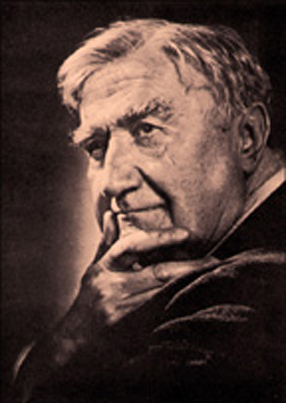by Matthew Raley After the North State Symphony's show with Amy Grant in Redding last week, conductor Kyle Pickett button-holed me for a discussion. Grant had sung "El Shaddai" near the end of the show, getting predictably warm-hearted applause. And the predictability was at the core of Kyle's question.
"Is that kind of response real faith in God? Or is it the result of a great performer crafting her show well?"
Kyle wasn't questioning either Grant’s or our audience's sincerity. He was questioning the mixture of entertainment and worship. Good performances and devout worship are both emotionally powerful. But the worshipper’s emotions are supposed to come from a connection with God, not with a performer. Kyle put his finger on a longstanding issue for Protestant evangelicals: when does a skillful performance eclipse God's presence? And when does human passion drown reverence?
He said, "You need to write an article on this." That's my cue.
For Protestants, this issue goes back to the Reformation.
The reformers Martin Luther and John Calvin did away with the distinction between “sacred” and “secular.” They taught that all aspects of life give glory God in Christ--all vocations, all settings, all human endeavor, not just church activities. Colossians 3:17 says, "And whatever you do, in word or deed, do everything in the name of the Lord Jesus, giving thanks to God the Father through him." This principle turns even a Christian's "secular" pursuits into worship. This is why Grant sings "El Shaddai" in the same concert with "Big Yellow Taxi."
But the reformers also taught a high view of corporate worship, fashioning a restrained liturgy to emphasize solemnity in the presence of a holy God. No "Big Yellow Taxi" as an offertory.
J. S. Bach often ran afoul of Pietist Lutherans because these two principles were (and are) in tension. A consummate performer and devout worshipper, Bach had no problem giving virtuosity free rein in church. But the Pietists wanted music kept simple to give free rein, as they saw it, to God.
The evangelicals who make up most of Grant's audience have a solution to this tension. Ditch solemnity. Let the popular passions loose with all their boisterous sentimentality. Amy Grant, church, entertainment, worship--they're all whooping it up at the same gospel party.
As an evangelical, I'm not thrilled with that solution. Entertainment often becomes a flippant substitute for doing business with God. To celebrate new life in Christ without attention to the fact that it came at the cost of his life is presumptuous. Because our sins are destructive to ourselves, others, and God’s glory, Christ's forgiveness calls us to express something deeper than "Woo hoo!" True worship comes from an attitude of submission, while entertainment stops at pleasure.
Still, I did not feel that Grant's "El Shaddai" encouraged flippancy in the audience. She directed the audience’s pleasure to the right source.
First, she was clear about being on stage to entertain. Great performers are able to touch deeper themes without being pretentious or manipulative by being straightforward about their purpose. “I’m here to give you pleasure.”
Second, Grant's three decades as a celebrity have seen plenty of controversy. She has received criticism for both her career and personal decisions. From her perspective of the ups and downs of fame, to sing about one of the Hebrew names of God, who "age to age is still the same," is to make a very personal statement of devotion.
Third, she used the craft of performance to focus attention on the words of the song. A manipulative performer would've pulled out all the stops--the full orchestra, back-up singers, a couple of chromatic modulations--to get the audience on their feet with a longstanding hit. Instead, Grant sang alone, accompanied only by acoustic guitar, communicating with directness and intimacy. This is how performers say, "Remember this one. Walk out with this song on your mind."
Of all the things she could have said at such a moment, she chose to say that God is always faithful to us. It was a great use of performance skill—giving pleasure with truth.
What the audience does with such a moment is another matter. Experiencing Grant's testimony, even identifying with it, is too passive. The glory of Christ calls us to go much further, and entertainment cannot take us there. To worship with integrity, we have to marshal all our skills to spotlight Christ.
To put it more directly, Amy Grant has offered her worship. Where’s ours?

 As a member of the first violin section, I was eager to experience the piece from the inside. I was also interested to gauge audience responses, and to consider what kind of spirituality Berg’s work expresses.
As a member of the first violin section, I was eager to experience the piece from the inside. I was also interested to gauge audience responses, and to consider what kind of spirituality Berg’s work expresses. I've given several examples of Alfred Hitchcock's abstract visuals in Vertigo (
I've given several examples of Alfred Hitchcock's abstract visuals in Vertigo ( Moreover, Herrmann blurs the classic distinction between diegetic and nondiegetic music at various points in the score. Diegetic music comes from a source within the film, like the record-player in Midge's apartment that annoys Scottie. Nondiegetic music comes from outside the story's action: the audience hears it, but the characters don't.
Moreover, Herrmann blurs the classic distinction between diegetic and nondiegetic music at various points in the score. Diegetic music comes from a source within the film, like the record-player in Midge's apartment that annoys Scottie. Nondiegetic music comes from outside the story's action: the audience hears it, but the characters don't. This month, the British Film Institute's journal Sight and Sound
This month, the British Film Institute's journal Sight and Sound




